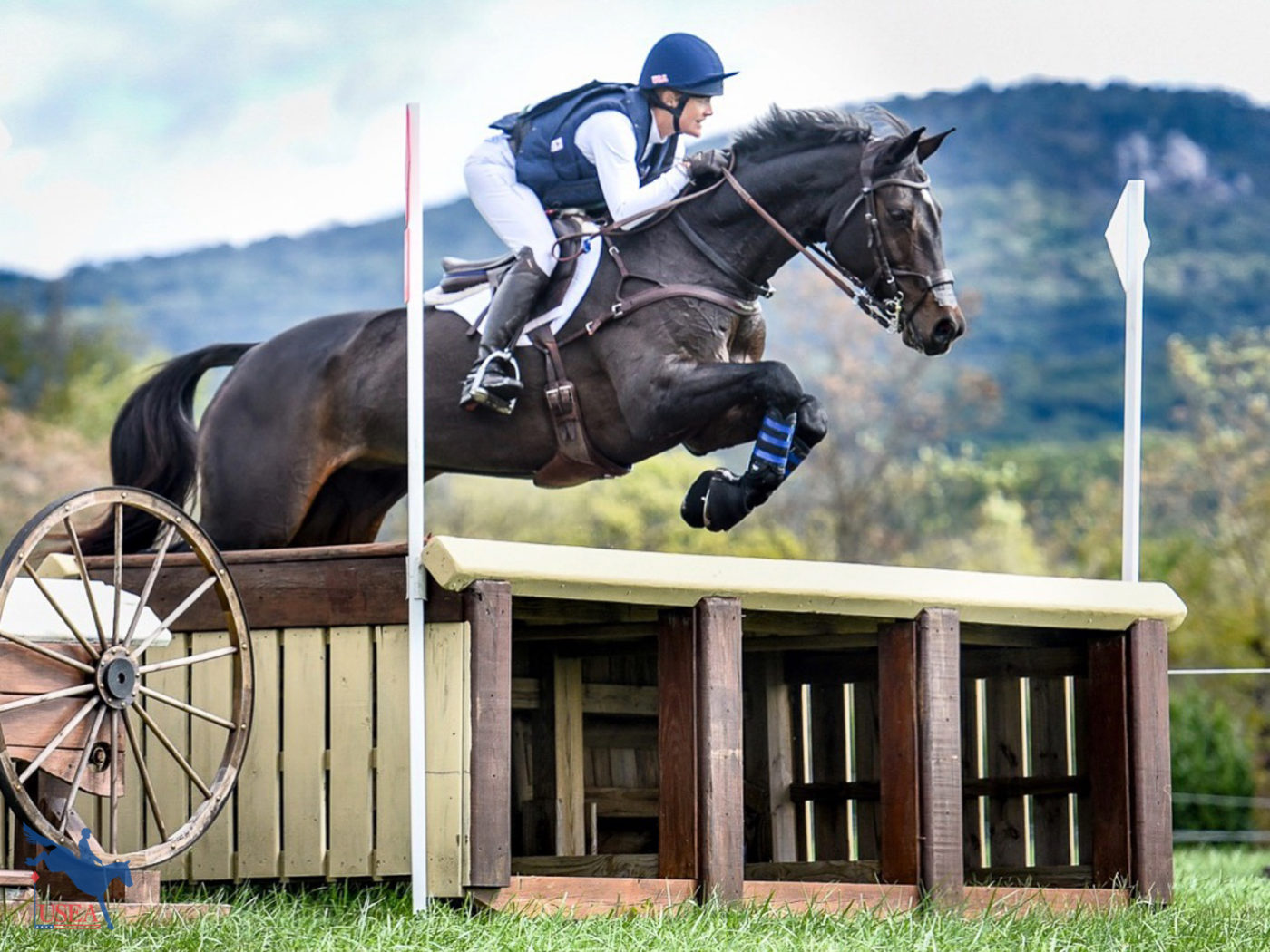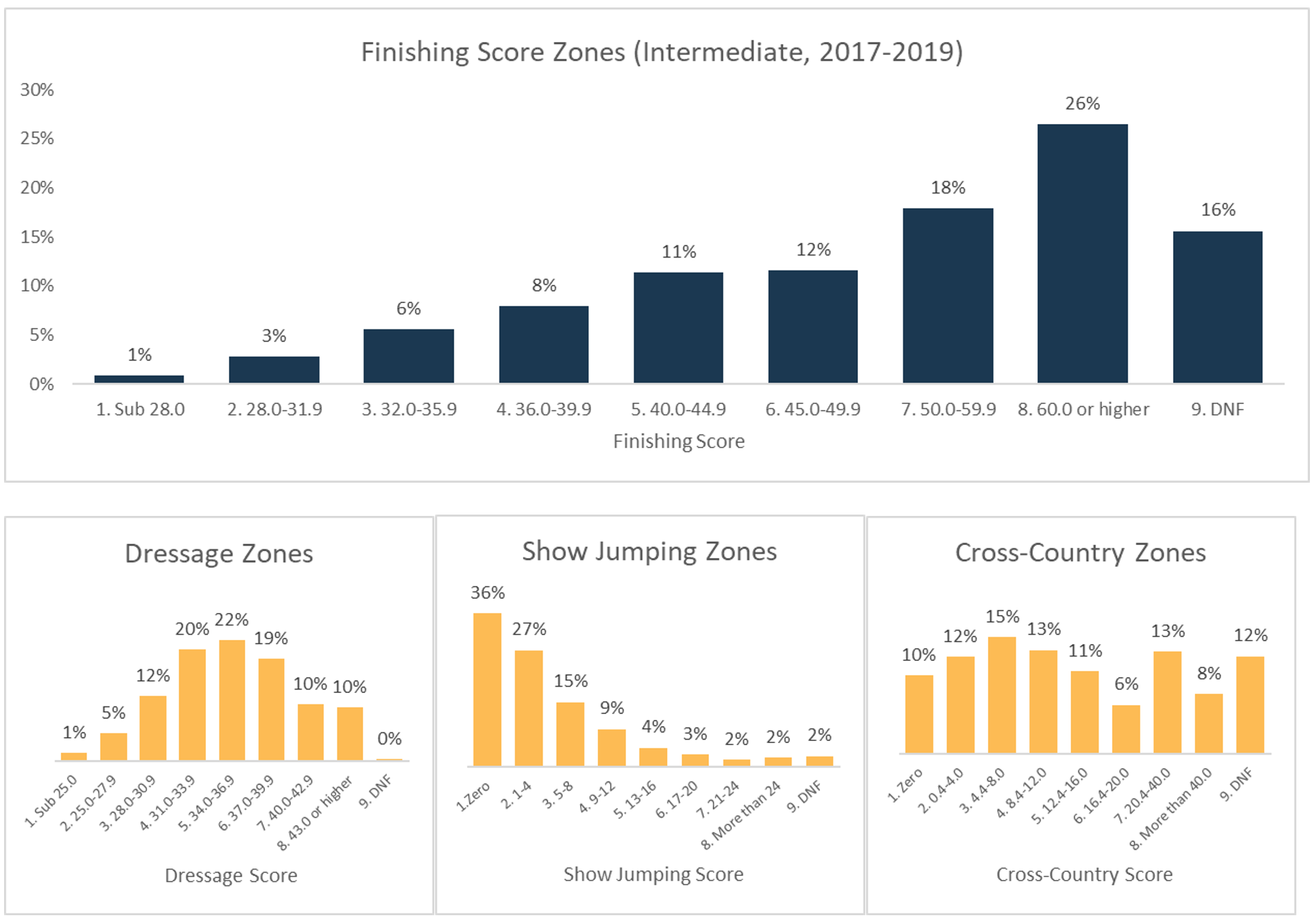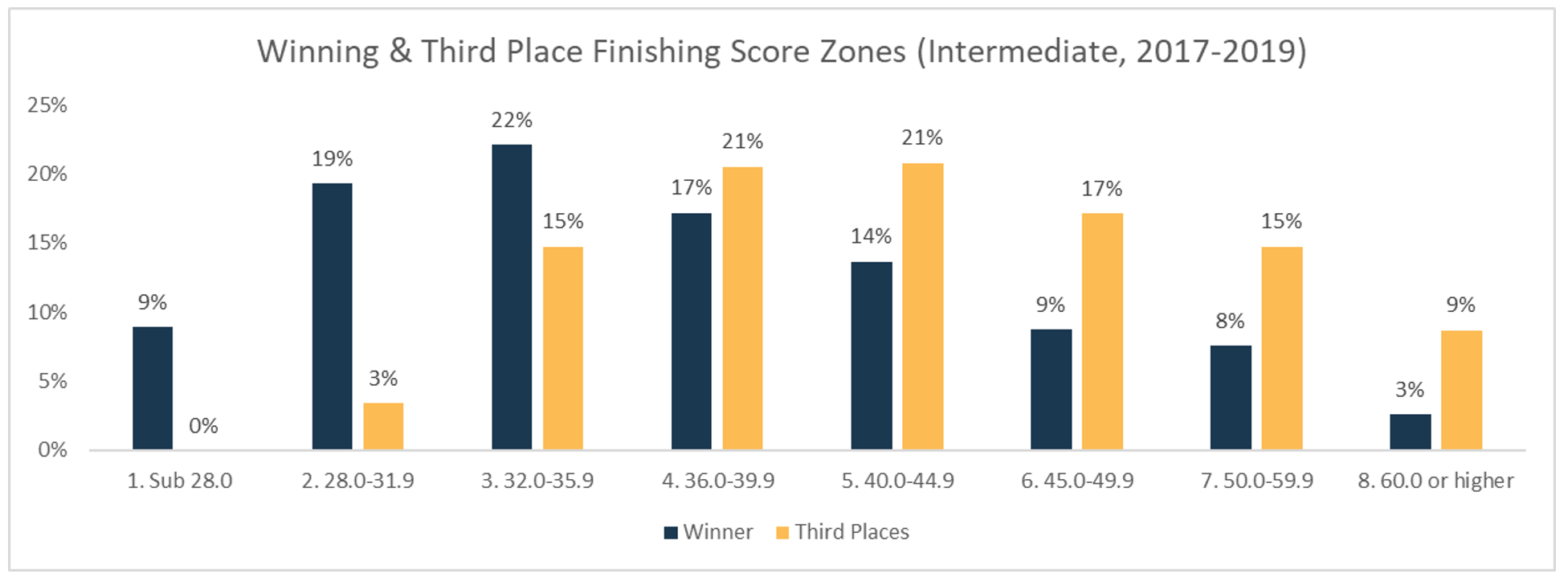Renew Your USEA Membership for the 2023 Season Today LEARN MORE

How competitive have your Intermediate results been? What is a good final score? What is a good dressage score? How are the top placers scoring? As we continue this series on the USEA levels, EquiRatings offers some stats and graphs to help evaluate your Intermediate game.
These graphs show Intermediate performance across the board, from sub-28 to DNF (Did Not Finish). Take a look to see what scores the Intermediate population has been earning. What scores do you usually get? We offer some of our takeaways to get you started.

Finishing Score Zones
Per-Phase Zones
Eventing is about putting all three phases together to finish strong, but what is a strong finish at the Intermediate level? What are the top finishers scoring? The graphs and tables below show you what it takes to win.

|
Final Position |
Average Dressage Score |
Started as Dressage Leader |
Started 10 Marks or Less from Dressage Leader |
Started more than 10 Marks from Dressage Leader |
|
Winner |
31.7 |
38.6% |
58.6% |
2.8% |
|
Third Place |
34.4 |
9.5% |
73.4% |
17.1% |
Using 2017-2019 Intermediate data.
|
Final Position |
0 Show Jumping Penalties |
1 to 4 Show Jumping Penalties |
5 or More Show Jumping Penalties |
|
Winner |
66.6% |
24.9% |
8.5% |
|
Third Place |
48.7% |
31.8% |
19.5% |
Using 2017-2019 Intermediate data. This table includes show jumping time penalties and jumping penalties.
|
Final Position |
Clear Inside the Time |
Average Cross-Country Time Penalties |
|
Winner |
29% |
4.5 |
|
Third Place |
18% |
7.0 |
Using 2017-2019 Intermediate data.
Lastly, we have pulled the 2019 record dressage scores and record finishing scores from the Intermediate level. All the top finishing scores are sub-28!

Seeing these types of overall stats can help you gain clarity and set realistic targets. Of course, long-term goal-setting is not about comparison; you have to stay in your lane or risk being robbed of fulfilment. But these numbers can help you figure out where you stand. If you do want to be a bit more competitive, now you know what it takes. Be encouraged by hitting small, measurable targets every step of the way.